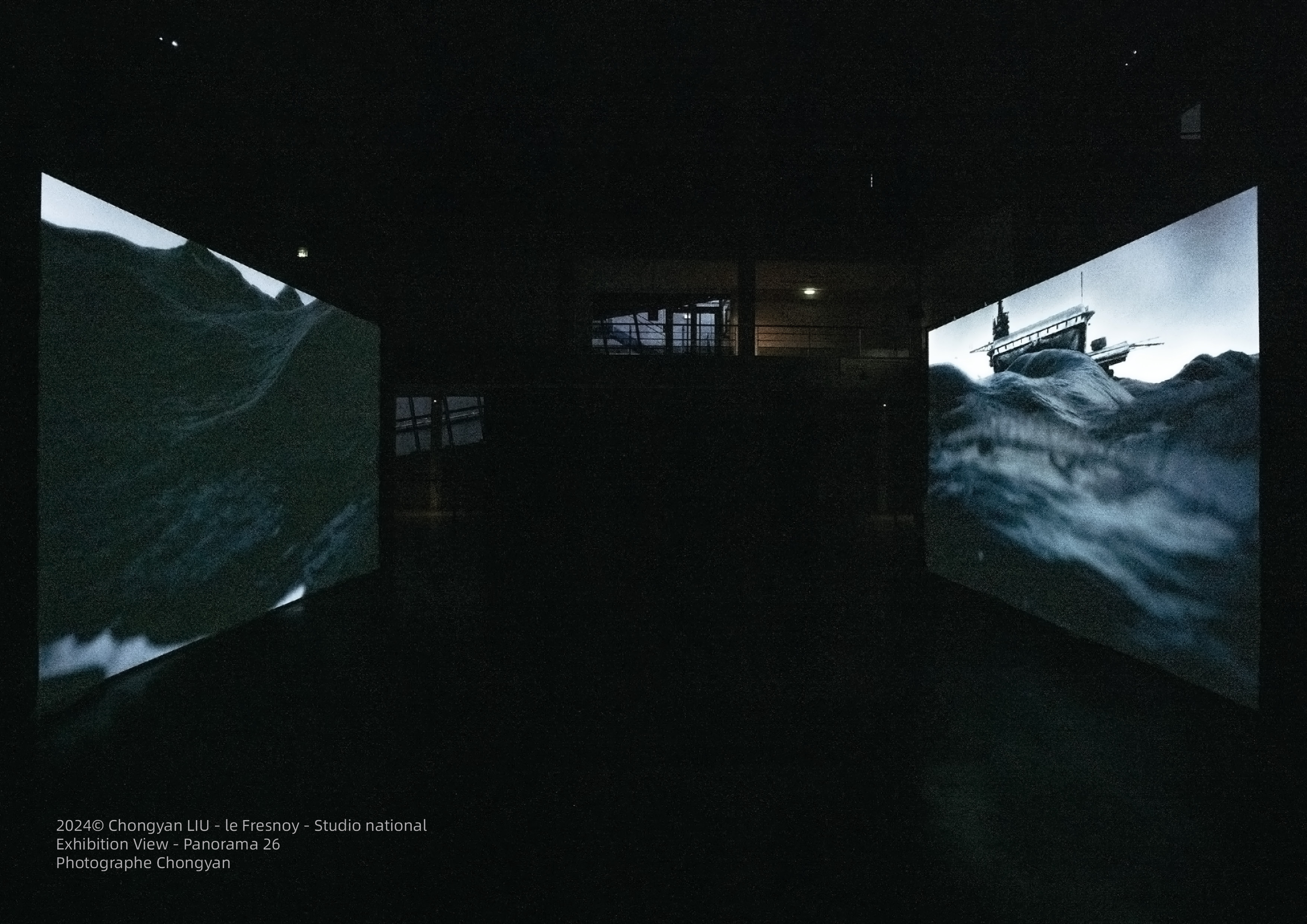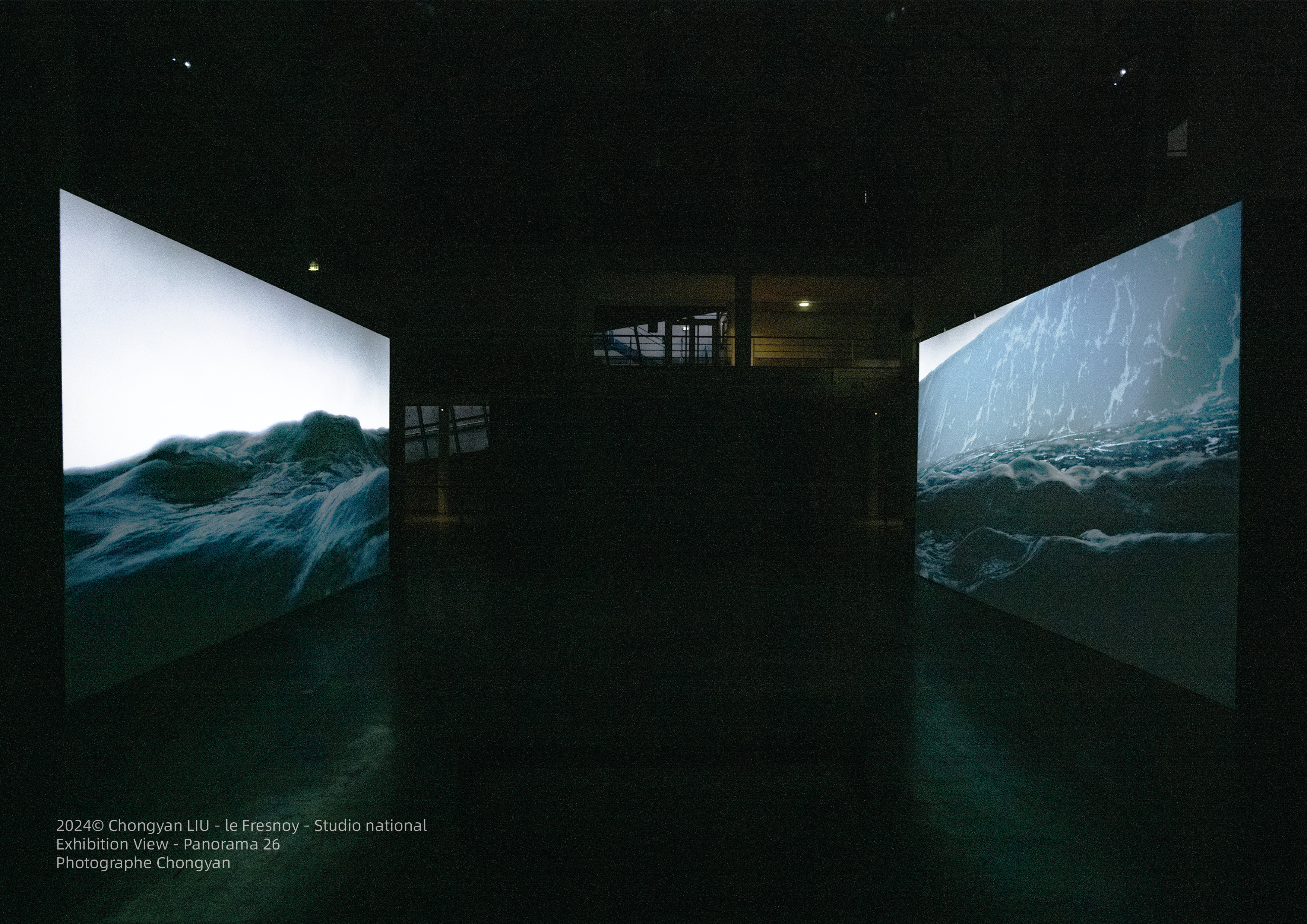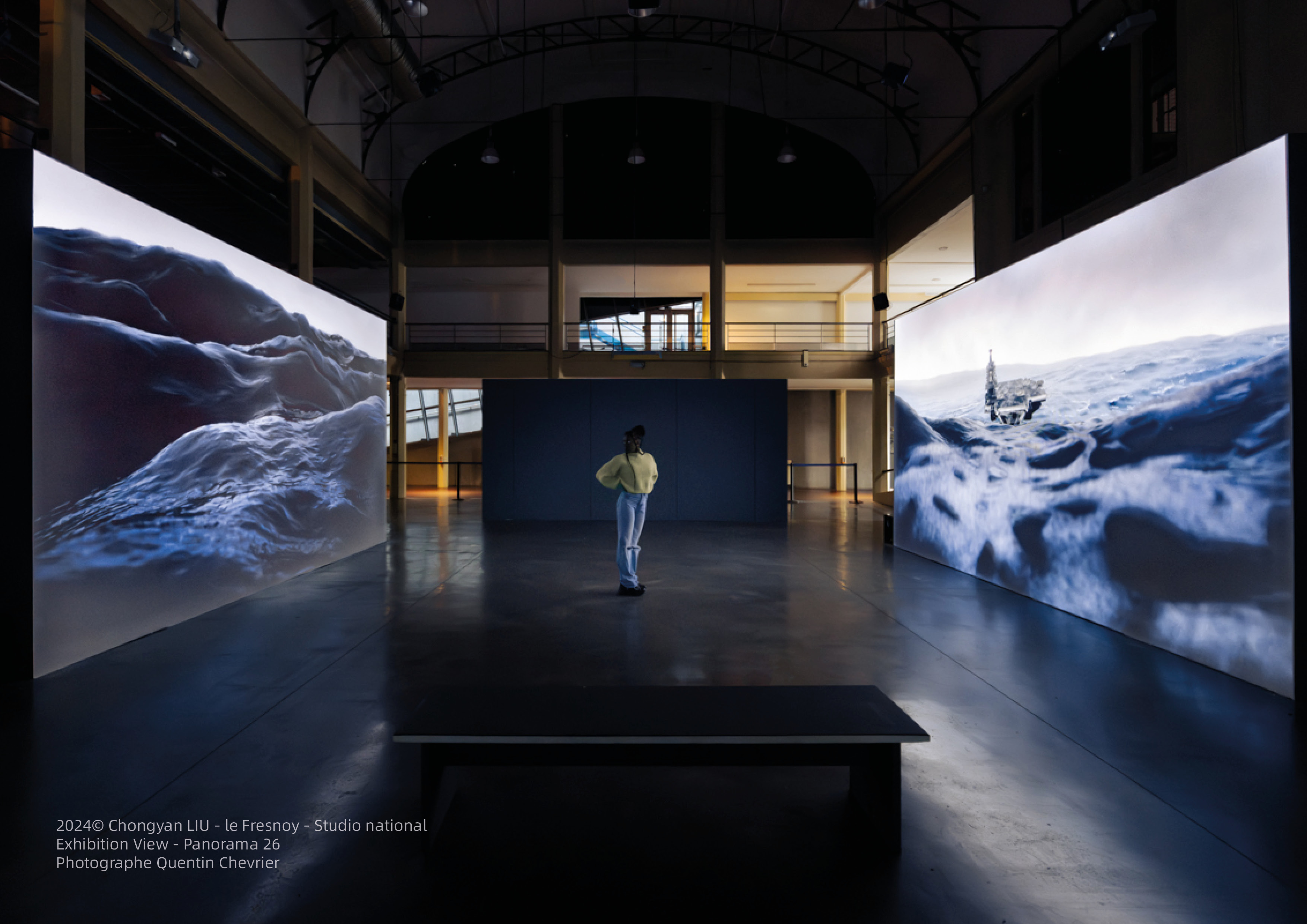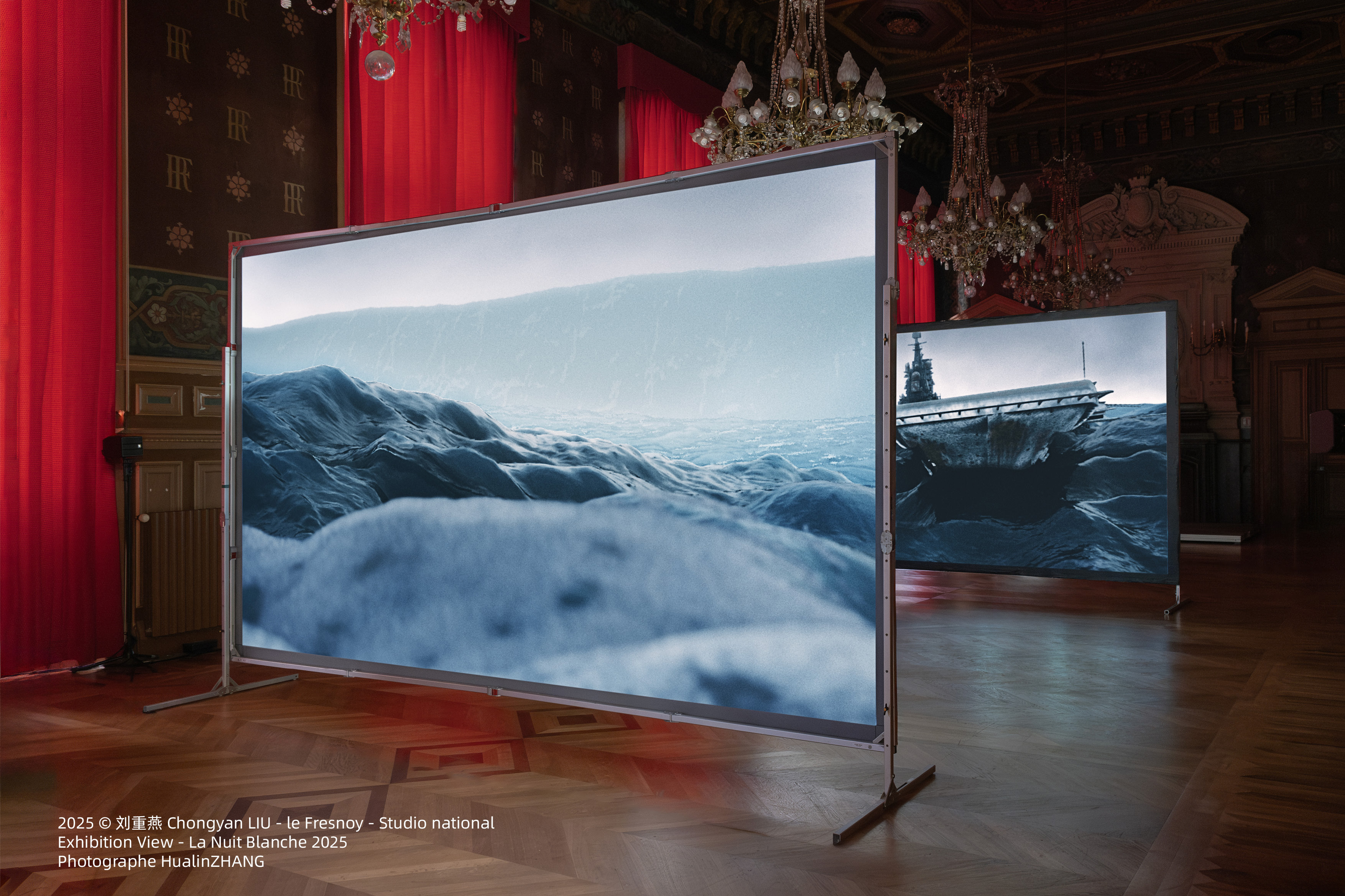言外之意
Dein Und Mein Dasein Und Das Dasein Der Welt
2024
Installation vidéo
10.45 min

 《言外之意》提供了一場完全的视听体验(Gesamtkunstwerk),邀请观众踏上一次穿越时空的冥想之旅和运动美学感知之旅。在波涛汹涌的大海中,一艘气势恢宏的航空母舰立即展现出其方向性和管弦乐般指向性的存在。作为一种象征性的视觉结构,它的巨大存在感被环绕它的海洋所感知。海洋在此象征着无意识的集體,在其汹涌澎湃中显示出一种内在的、永恒不变的力量。雙屏裝置就像过去与现在、秩序与混乱、个体性与集体性交织在一起的一場辩证摩擦;沉浸在一种不协调而又令人兴奋的时空中。在这一以指向性结构和無意識集體的追逐情境中,我们潜意识中对集体无意识不可逆转的服從躍然紙上。
《言外之意》提供了一場完全的视听体验(Gesamtkunstwerk),邀请观众踏上一次穿越时空的冥想之旅和运动美学感知之旅。在波涛汹涌的大海中,一艘气势恢宏的航空母舰立即展现出其方向性和管弦乐般指向性的存在。作为一种象征性的视觉结构,它的巨大存在感被环绕它的海洋所感知。海洋在此象征着无意识的集體,在其汹涌澎湃中显示出一种内在的、永恒不变的力量。雙屏裝置就像过去与现在、秩序与混乱、个体性与集体性交织在一起的一場辩证摩擦;沉浸在一种不协调而又令人兴奋的时空中。在这一以指向性结构和無意識集體的追逐情境中,我们潜意识中对集体无意识不可逆转的服從躍然紙上。无所不在的政治话语形式如何潛移默化地塑造了我们的视角?更具体地说,塑造了我们的 “Dasein”(我們面向世界的存在)?
A proverb often used to describe the relationship between power and democracy in China says: “Water can carry a boat, but it can also overturn it.”
Taking up this metaphor of water as a socio-political current, this immersive installation invites us to feel the underlying forces of history. A 3D-modeled ocean, divided between two projection screens, is traversed by two symbolic entities. First appears an aircraft carrier, representative of military authority, playing a crucial role in international relations. Then emerges a tsunami — an uncontrollable force of nature — that seems to be pursuing it. Between the two screens, the audience is literally traversed by these elements, mirroring individuals carried and swept away by the currents of the present.
In synchronization with the video, the sound unfolds in multiple layers, blending historical archives, political speeches, and natural sounds, diffused through an octophonic (8.2) sound system distributed across the space. This total kinesthetic experience reflects the difficulty of fully grasping the multiplicity of perspectives in a hyperconnected society.



Production : Fresnoy – Studio national des arts contemporains
With the support grant from the Neuflize OBC foundation
International Distribution
Le Fresnoy | Natalia TREBIK
ntrebik@lefresnoy.net